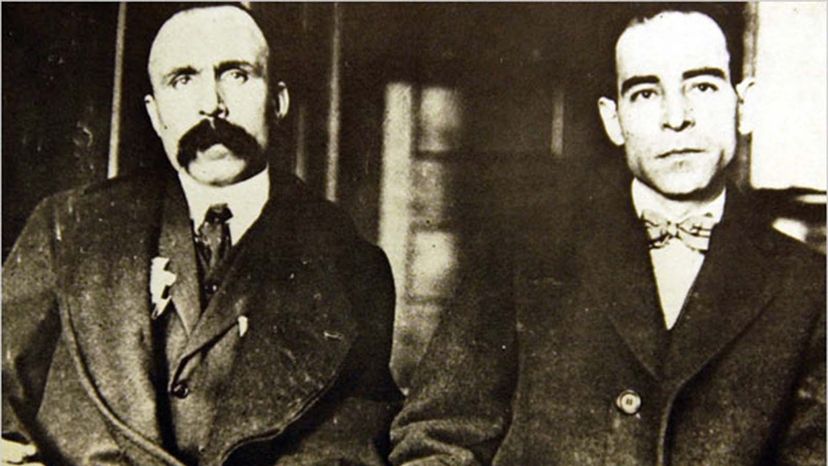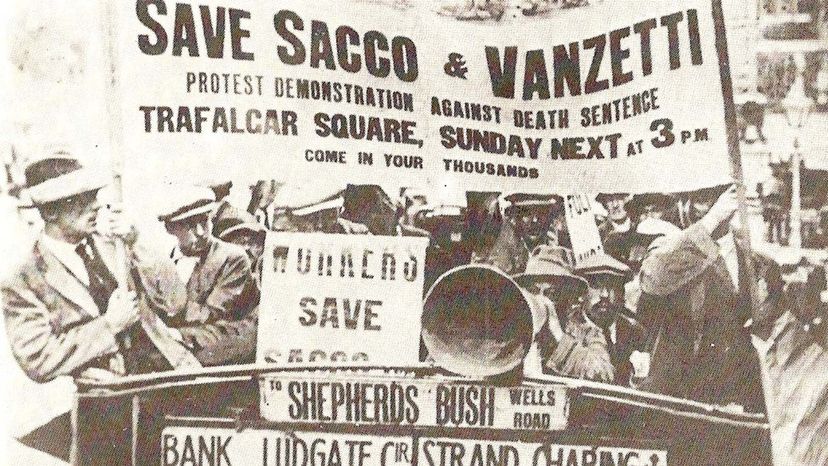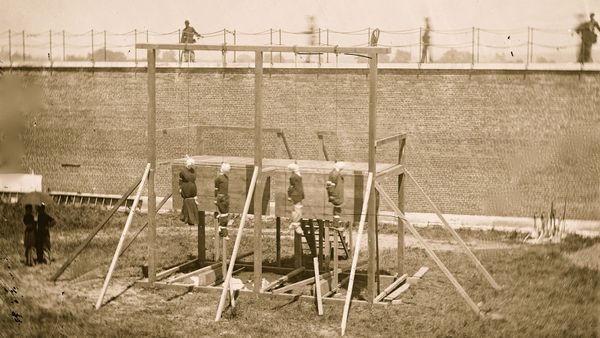
The world will probably never know whether Nicola Sacco and Bartolomeo Vanzetti were truly guilty of murdering two men in 1920. But the controversial trial of these immigrant anarchists is considered one of the 20th century's most famous.
Italians Sacco and Vanzetti both emigrated to the U.S. in 1908. Settling in Massachusetts, Sacco worked as a shoe factory edge trimmer, while Vanzetti was a fishmonger. But according to the HowStuffWorks podcast "Stuff You Missed in History Class," the men were also involved in some unsavory activities. They belonged to Gruppo Autonomo, an East Boston anarchist cell that was plotting a violent overthrow of the government. And they'd written for an Italian anarchist newsletter — actions that resulted in their names being placed on a "watch list" of potentially dangerous people. Still, neither had a criminal record.
Advertisement
In April 1920, two men were gunned down outside a shoe factory in South Braintree, Massachusetts, while carrying some $15,000 in payroll money. Eyewitnesses said a group of Italian-looking men did it, then sped away in a Buick. Sacco and Vanzetti were fingered for the crime — partly because they were linked to the Buick and had guns — and brought to trial before Judge Webster Thayer of the Massachusetts Superior Court in May 1921.
Controversy enveloped the trial, in which the men were found guilty and sentenced to death. While the men lied several times during questioning by police — out of fear, they said, because of the anti-immigrant and anti-Communist sentiment sweeping the nation — Judge Thayer was openly biased against the duo because they were foreigners and draft dodgers who held anti-government views. At one point, he called them "anarchist bastards."

In addition to facing a prejudiced judge, the Italians' lawyer wasn't that talented and witnesses testifying on the men's behalf were heavily pressured about the veracity of their claims. The men didn't speak English fluently, either, leading to speculation they may not have fully understood all of the questions being asked. Perhaps most important, however, is that the prosecution did not present any witness who could positively identify the men as the murderers.
After the verdict, intellectuals and leftists around the globe rallied in support of the men, calling for a retrial due to the unfairness of the proceedings. But none was granted, even when convicted murderer Celestino Madeiros confessed to the crime, saying he committed it with the Joe Morelli gang.
Sacco and Vanzetti were electrocuted in August 1927. Massive protests against their execution erupted around the nation and world. In Germany, six people died during demonstrations, while in Geneva, 5,000 people staged a protest, destroying American goods.
Today, opinion is divided as to whether the men were guilty. Modern FBI ballistics techniques indicate Sacco was likely guilty, as a bullet from his gun killed one of the men. But there is no similar evidence indicating Vanzetti was involved. Innocent or guilty, most experts today believe the two men should have been afforded a new trial because theirs was definitely skewed in favor of the prosecution.
In 1977, then-Governor Michael S. Dukakis of Massachusetts issued a proclamation stating the two were unfairly treated and no stigma should be attached to their names.
Learn more about Sacco and Vanzetti in "The Sacco-Vanzetti Affair: America on Trial" by Moshik Temkin. HowStuffWorks picks related titles based on books we think you'll like. Should you choose to buy one, we'll receive a portion of the sale.
Advertisement

